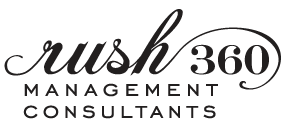The future of work is now.
I participated in a Wall Street Journal [WSJ] event recently on the future of work and have also been reading Brand Thinking by Debbie Millman.
Many of us are thinking about our post Covid lives and how we want to work in the future. A return to normal or new normal sounds comforting after years of so much disruption. However, I think the opportunity in front of us now is even bigger.
Biotech, clean tech and tech companies have accelerated the commercialization of their pipelines. The solutions of the future are now the solutions of today. Leaders should be thinking about how to use that momentum to transform their organizations to meet the moment.
I’d like to share some of the latest insights and hear your thoughts on the questions below.
Four insights for transforming your organization.
1/ Lead with purpose
Purpose driven organizations think about what they want to put out into the world. It’s similar to your why or reason for doing something.
I’ve written about employees being conflicted when there is a misalignment of personal and company values. The issue surfaced again in the book Brand Thinking. Reportedly, some people who work on iconic brands like Coke feel deeply conflicted. They’re aware of the negative impact on human life when too much of the product is consumed.
They find ways to rationalize their involvement by looking for a mitigating effort or shifting responsibility to the “educated consumer”. In terms of Coke, they discovered the vast supply chain that can facilitate the distribution of water in desperate times. The mitigating benefit of the supply chain for some is sufficient to justify the negative impact of the product on human life.
The idea of the “educated consumer” is one that all leaders have to rumble with. Did you know that one can of Coke contains 9.75 teaspoons of sugar and that the daily recommended amount of sugar is only 6 teaspoons? Likely not, unless you had reason to research it. The average American is consuming more than 3 times the daily recommended amount of sugar. They probably don’t even realize it. Is it reasonable and fair then to assume the consumer is sufficiently educated to make an informed decision?
2/ Design around employees
The great resignation is a wake up call for all types of organizations from retail to healthcare. Service jobs are tough jobs and few people who do them want to stay in them long term, especially if they have other options.
Leading edge organizations are taking note and putting employees at the center of everything. Design leaders are thinking about ways to enhance the employee experience as they do with customers. The thought is that if employees are happy on the job, they will provide service that makes internal and external customers happy too.
Companies on the leading edge are creating larger perk budgets and approving a wider use of perk dollars. For instance, employees who miss working in an office can now spend their perk dollars on shared offices such as WeWork. The traditional corporate office is becoming a relic of the past as companies reimagine the space for collaborative meetings and events. Corporate offices are not being eliminated but rather transformed into design studios.
3/ Be intentional with time
Love them or hate them, meetings are also getting a makeover by leading edge organizations. To them most meetings are nothing more than a bad habit. Design leaders are encouraging employees to meet only when they need to discuss, debate and decide on an issue or opportunity.
Asynchronous communication is being encouraged as much as possible. How exactly? That depends on the organization, employee preferences and the tools used. Periodic calls, video chats, shared documents, messaging platforms, email and text are all good options for routine and ongoing communication.
4/ Realize all potential
Corporate leaders routinely discuss how to attract and retainer younger generations and include their voice at all levels of the organization. It’s important to have a good balance of representation throughout the company. However, leading edge organizations are realizing that they have lost focus on a big and important segment.
The aging population is growing and will soon account for the largest portion of the population in every country around the world. Scientists and medical researchers are discovering ways to keep people healthier and more productive until end of life. Retirement at 50+ may not be a desire or even a reality for many in the future. What is your organization doing now to recruit and retain GenX and Baby Boomers?
